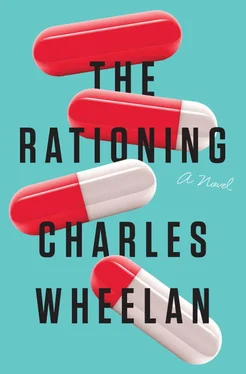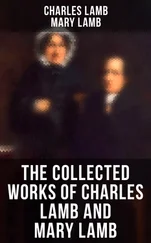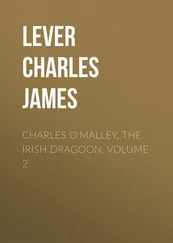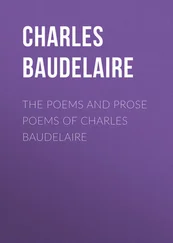For all that, the President’s response to the Outbreak enjoyed reasonable support. He had never been personally popular. (Even before the Outbreak, fewer than half of those asked said he would be a fun person to have a beer with.) The “adults” in Congress had done a good job of explaining and defending the White House response to the crisis. The most idiotic ideas floated by other members of Congress, usually in front of a television camera, tended to sink on their own (e.g., using military force to procure Dormigen from countries unwilling to share). Policy types offered up numerous sensible reforms to ensure there would not be another Dormigen-type shortage in the future. Most of these recommendations had been filling binders and glossy reports for years. (The Brookings Institution had hosted three conferences over the previous decade on issues related to the development, affordability, and distribution of “uniquely valuable” prescription drugs; only eighty-three people attended the largest of them, including Brookings staff.) Of course, now that the milk was spilled, the nation was giving more time to those who had warned that the glass had been perched precariously on the counter. Still, the milk was spilled. Most reasonable people agreed with the President’s effort to clean it up. One could argue the President’s approach was sensible because it protected so much of the population. He was taking heaps of abuse for his proposed rationing, but, more quietly, he was also getting credit for the implicit triage. Most Americans were protected. The President had been elected by a coalition of voters exhausted by political nonsense; for the most part, they were sticking with him.
Around ten-thirty in the morning, I received a text from the NIH Director summoning me to a noon meeting. Tie Guy called me separately. “They found a difference,” he said when I answered.
“Who?” I asked.
“The biochemists. The virulent form of Capellaviridae is missing a protein,” Tie Guy explained. He was speaking faster than I had ever heard him speak, and my cell phone reception was choppy, so I could not absorb all the details that he was spewing. “This is what we’ve been looking for,” he continued.
“A missing protein,” I repeated.
“Yes,” Tie Guy said excitedly.
“Which means the harmless form of the virus has an extra protein,” I said, thinking as I spoke. “As if it had been neutralized by an antibody.” That is how antibodies work: they attach proteins to viruses, rendering them impotent, like the key in a lock.
“That’s what it looks like, more or less,” Tie Guy said, growing calmer.
“It’s consistent with our theory,” I said.
“Yes, good work,” he offered.
Our noon meeting was delayed, as the NIH Director finished a call with the Chief of Staff to apprise the White House of our latest findings on the virus. She and the Chief of Staff agreed that we were not ready to make a public announcement of the breakthrough. There were too many outstanding questions: What caused the difference in the two viruses? What role did the dust mite play, if any? And most important, how could this discovery help those who became sick with the virulent form of the virus? The President overruled their decision, ordering the Communications Director to put out a release immediately. “You don’t think it will raise false hope?” the Chief of Staff asked.
“That’s the point,” the President answered, turning his attention to the Communications Director. “Say that scientists have—no, make it ‘NIH scientists’—we might as well get some credit for government work. Say that NIH scientists have made a major discovery… something about why the virus turns deadly.”
“The NIH scientists have identified the protein responsible for the difference between the indolent and virulent forms of Capellaviridae ,” the Communications Director offered.
“Fine, but don’t say ‘indolent’ or ‘virulent.’ Use words that people watching The Bevin Crowley Show can understand.”
“Okay.”
“Then say that scientists are optimistic this will lead to a non-Dormigen treatment for the virulent form of Capellaviridae —but don’t say virulent.”
“Dangerous,” the Communications Director suggested.
The Chief of Staff warned, “That’s a very strong statement. The NIH Director just told me they have no idea what accounts for the difference in the two viruses and they don’t think they can develop a vaccine in three days.”
“Do we want to create false hope?” the Communications Director asked.
“Yes, I just told you that,” the President answered impatiently. Once again, he was playing political chess while others in the room were playing checkers. The press release went out shortly after noon in Washington. In New Delhi, where it was nearly ten at night, an aide to the Indian Prime Minister delivered the news to him: the Americans had cracked the code on the Capellaviridae virus. The Prime Minister was planning to phone the U.S. Secretary of State in the morning to offer a Dormigen shipment sufficient to solve the shortage (subject to certain conditions, of course).
“What if they solve this thing before we can offer them the Dormigen?” he asked his assembled aides. He really said that out loud.
OUR EARLY DISCUSSIONS ABOUT DORMIGEN RATIONING HAD been theoretical, almost like an exercise in a college ethics class. It was no longer feeling theoretical. Those of us working closely with the President could see him carrying the pressure. He physically looked different, weighed down somehow. Even the sardonic humor was gone. The President reminded staff members that thousands of lives were at stake. Cecelia Dodds reminded us that each one of those cases would be a tragedy somewhere, regardless of how sick or old that person happened to be. People are going to die who do not have to die, he would intone to anyone whom he felt had become too insouciant with the situation. The staffer would apologize, surprised by the emotion in the voice of the President, a guy who normally guarded his emotions closely, especially around junior staff.
There were several White House interns whose job it was to sort through the mail (after the security screening). The President had a standing request to see a sample of the physical mail and e-mail flowing into the White House. The interns would select a handful of positive notes, a handful of critical ones, and then several selected at random. Under normal circumstances, the interns would also bring him a few from the “crazies”; the President found temporary amusement in letters from people who blamed him for the poor performance of the U.S. men’s soccer team or warned him of an imminent Canadian invasion. One famous letter from San Diego—three pages, typed—complained that a neighbor’s dog was “shitting all over a six block radius” and asked accusingly what the President planned to do about it. There were five pages of accompanying maps and several photos that appeared to have been taken by a drone. If the President was in a particularly good mood, he might dictate an ironic response. For example, he wrote a letter to the San Diego complainant informing him that the “defecating dog” was really a matter for Congress to handle. “Make sure you copy the Speaker,” he told the staffer to whom he had dictated his reply.
Even during the Outbreak, the President was diligent in spending some time every day with his mail. While he was on Air Force One, he had letters scanned and e-mailed to him, as he wanted to maintain a feel for what ordinary people were thinking and feeling. Polls could give him a snapshot of national sentiment, but they were “shallow,” as he liked to describe them. People around the country—those who bothered to answer the phone—were disturbed as they cooked dinner or watched television or surfed the Web. They answered the requisite questions, eager to get off the phone as quickly as possible. But the folks who took the time to write to the White House were different—whether it was an old-fashioned handwritten letter with an envelope and stamp (the President’s favorite, even when they were critical) or by e-mail. They tended to express a thoughtfulness and depth of emotion that the polls could not capture.
Читать дальше












